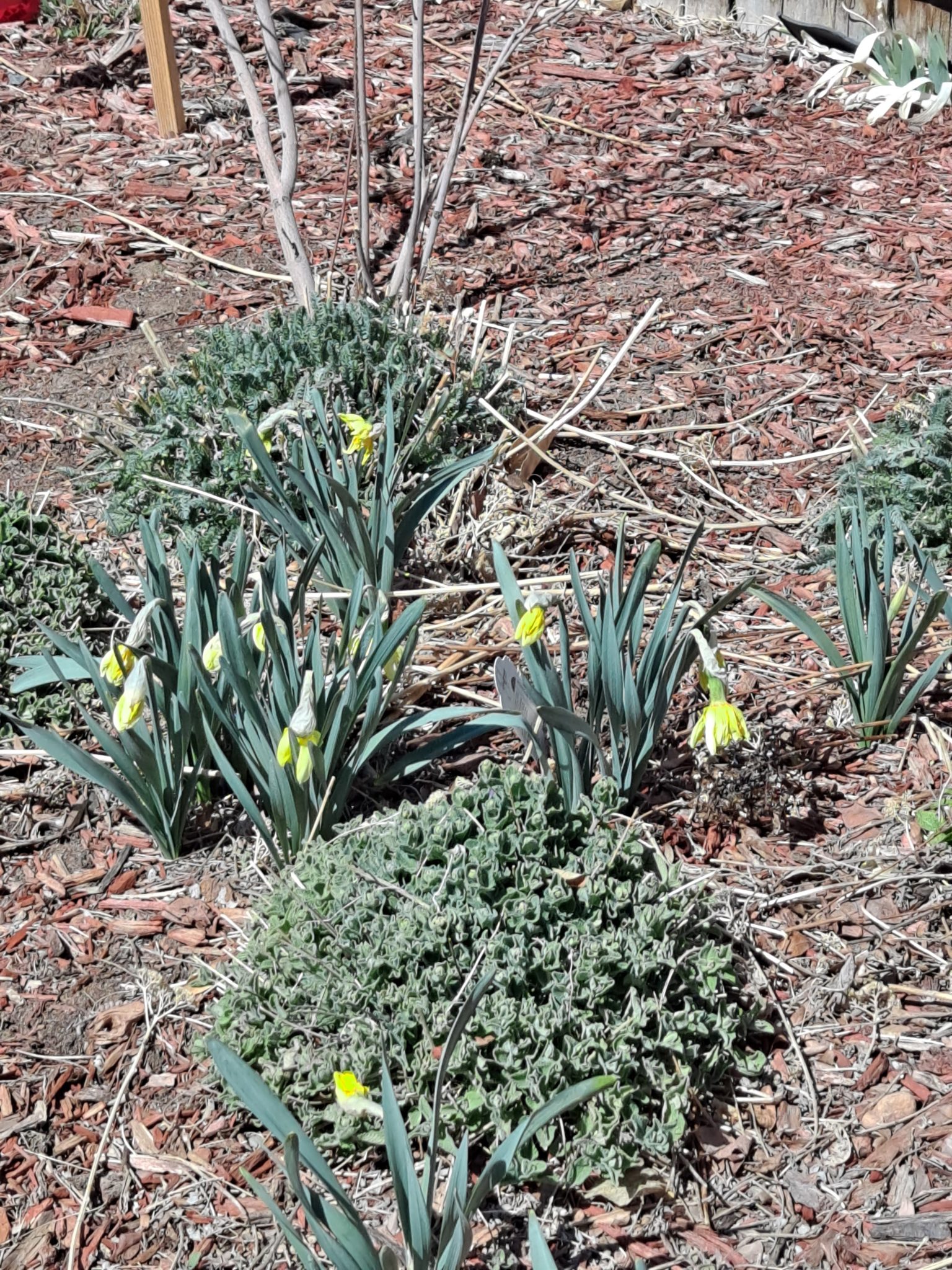Spring is returning to my area in fits and starts. Which is of course not unusual. The transition between the seasons is always unpredictable. The transition from winter to spring seems to always have the biggest swings. Cold one day, warm the next, then a deep freeze.
The winds here have been unrelenting. Weeks of gales that have made everybody cranky. I exaggerate a little, but this has been one of the windiest springs I can recall. Steady winds from 15 to 35 miles an hour, with gusts up to 60 mph, for days on end.
I am not very inclined to work in such weather.
Springtime chores
On the days when the winds aren’t howling, and the temperatures have been pleasant, I have been able to get some of my springtime chores accomplished. I’ve cleaned up all the garden beds, gotten the lawn aerated, and put fertilizer down on the grass.
I’ve also pruned back several shrubs, including my ‘Blue Mist Spirea’s’. I really like Blue Mist Spirea. Their deep blue flowers provide a splash cool color in the late summer garden. Some years, if the weather cooperates, their leaves can even put on a decent show in autumn. Added bonus, they are drought tolerant.
But they do require an annual haircut in the spring.
Below is the “before” picture of one of my Spiraeas. Quite a mess, am I right?
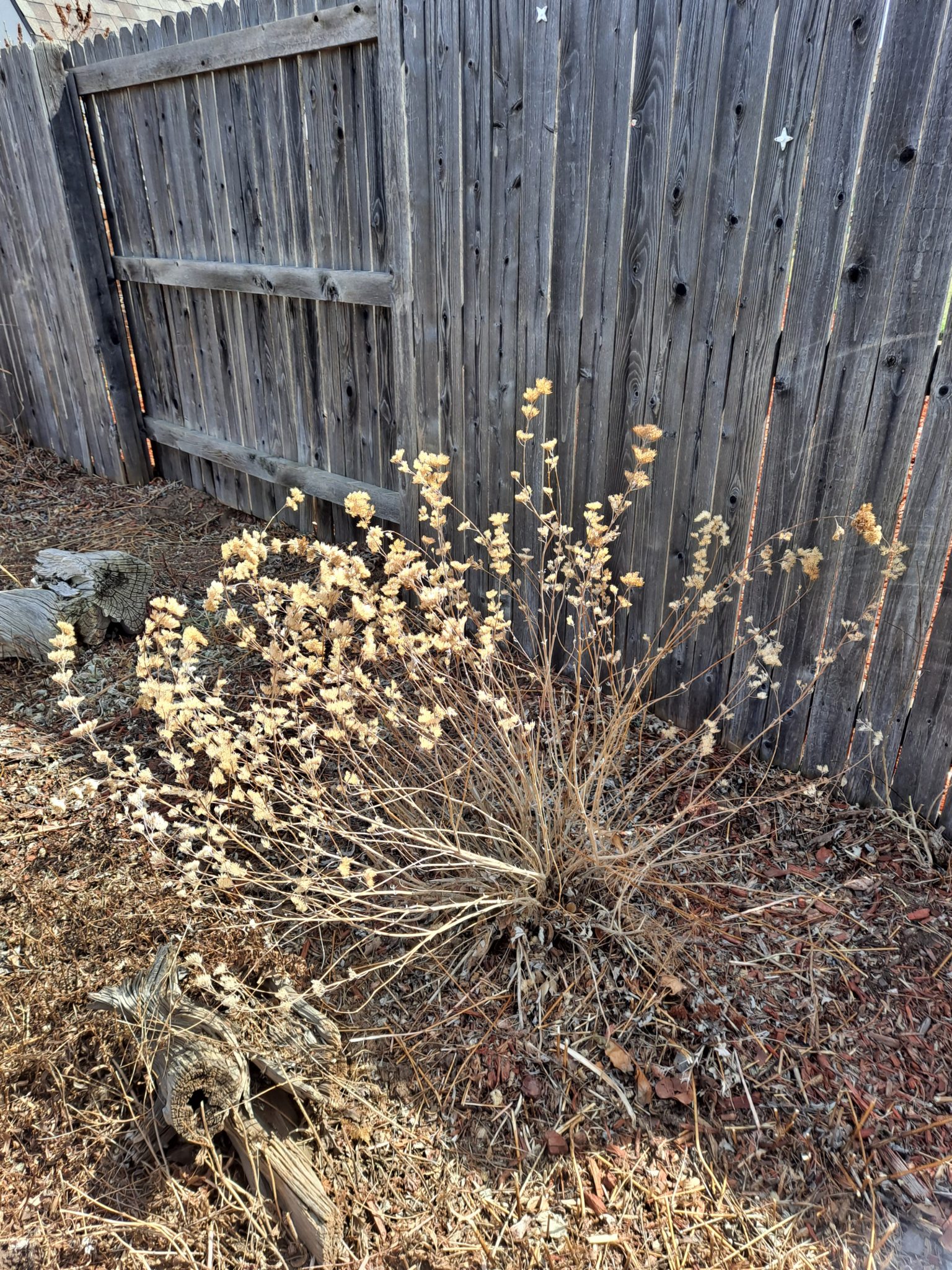
Blue Mist Spiraeas are one of those shrubs that typically die back partway over the winter. In really hard winters, they can die back all the way to the ground. So, it is a good idea to prune them back in early spring, at least down to where there are buds showing. Not just for aesthetics, but because this shrub sets its blooms on new wood.
In the picture below, the red arrows are pointing at a couple of emerging buds to give you an idea of what they look like.
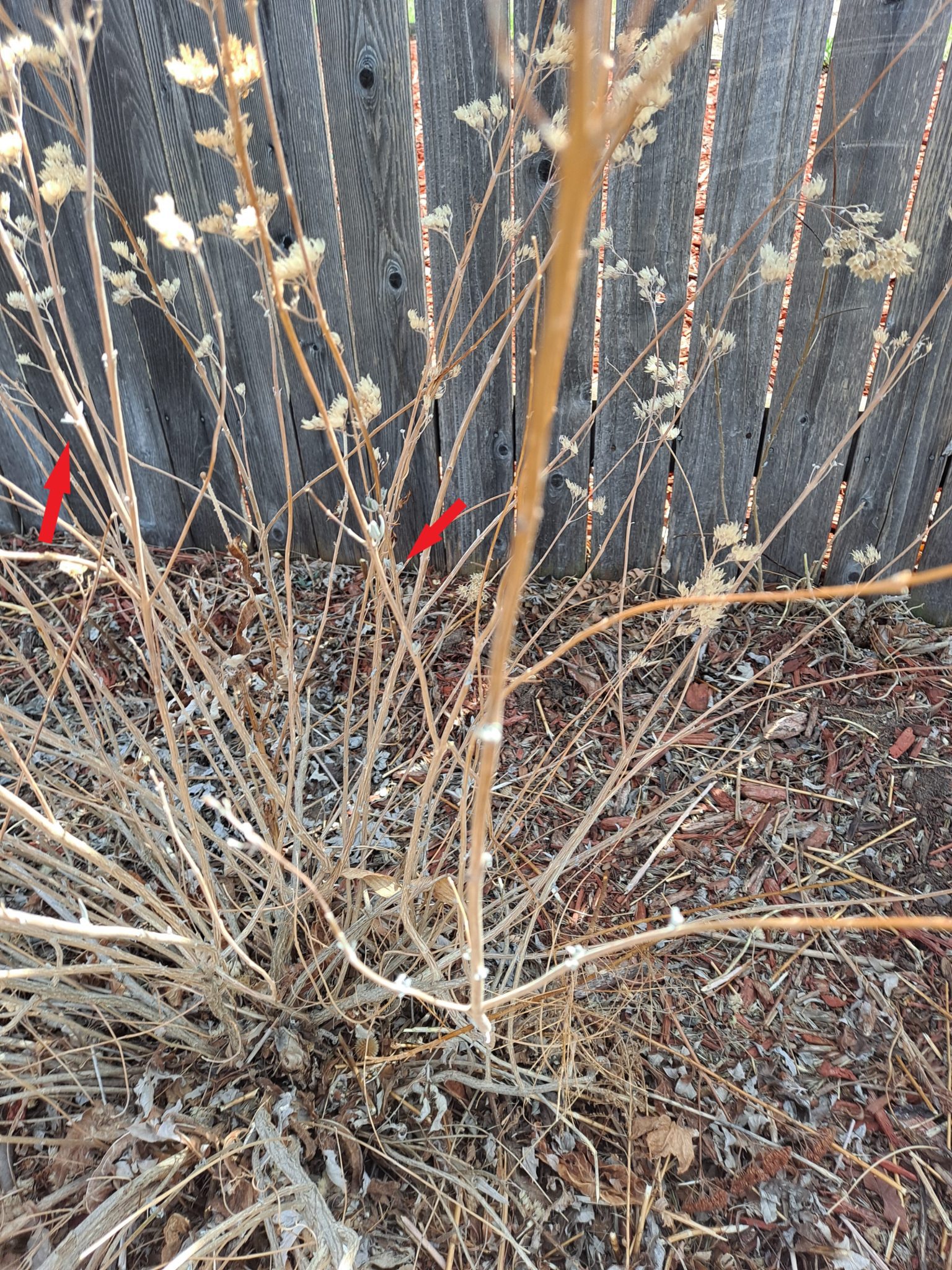
I took my secateurs (we Americans call them garden pruners, but the British call them ‘secateurs’ and I really like that word. So fancy!) and went to town. Below is the after picture. My Blue Mist Spirea is now ready for the growing seasons ahead.
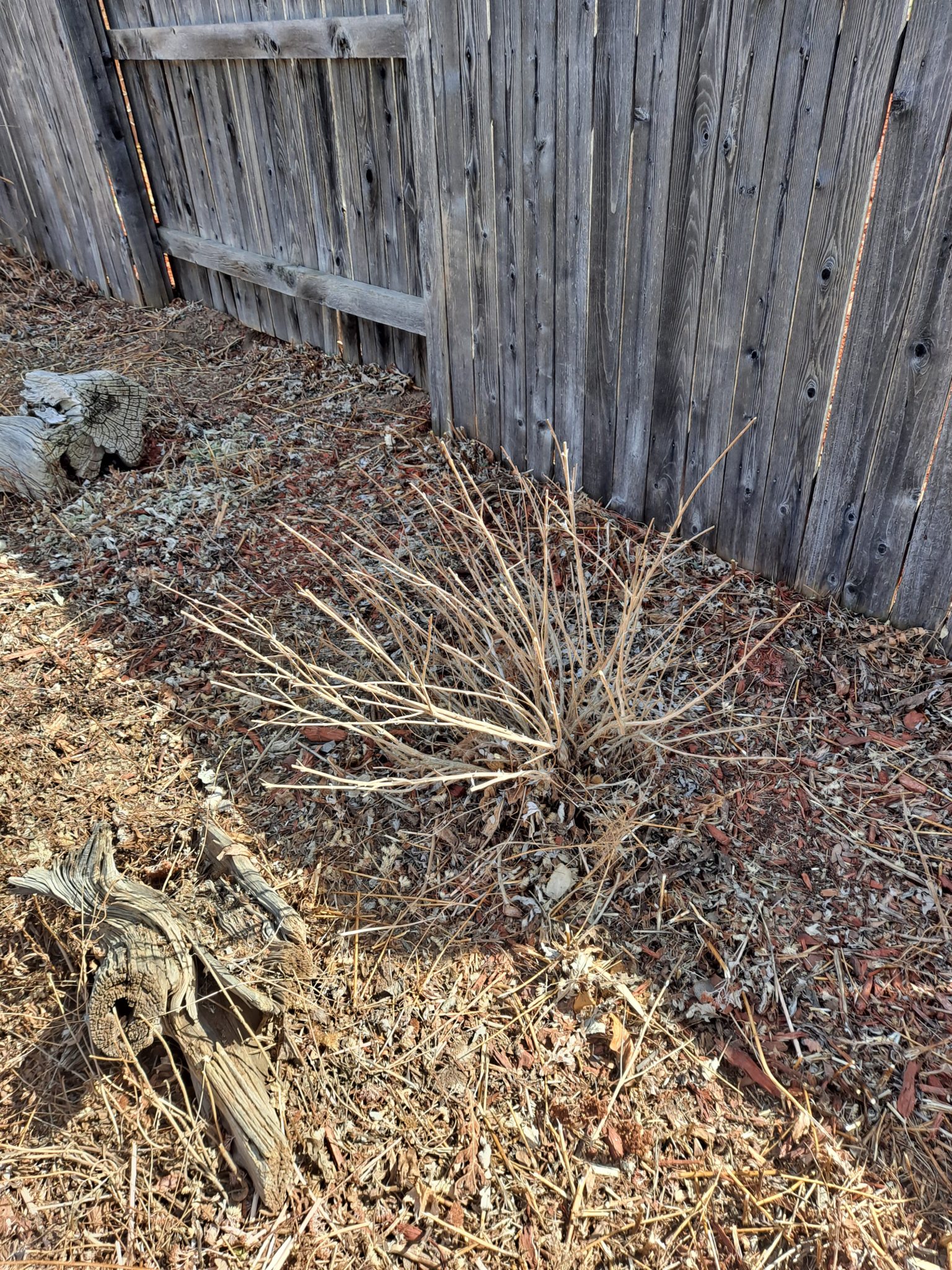
Aerifying the borders
Another project I’ve undertaken this spring is aerifying the borders. Aerifying is a fancy way of saying “sticking a turning fork in the ground and wiggling it back and forth”. I’m doing this to uncompact the soil.
Is this necessary? Absolutely not. But the soil in the Vintage yard is fairly heavy clay. In fact, the area I live in has earned the sobriquet “Bentonite Manors”. Bentonite is a type of clay. Clay has its positives; for one, it holds moisture really well. A useful characteristic when one is trying to grow drought tolerant plants.
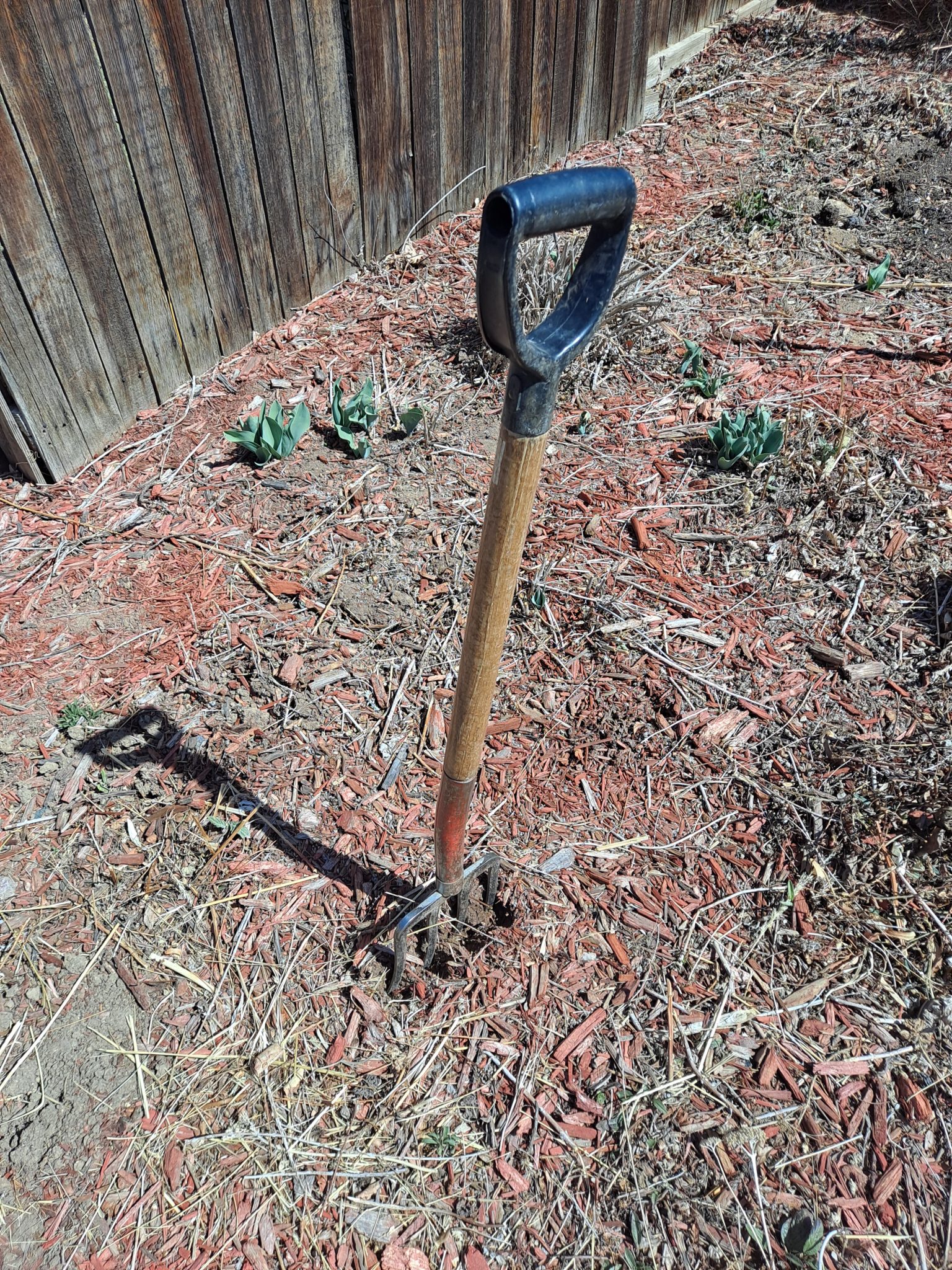
On the other hand, one of clay’s biggest downsides is that it can get easily compacted. Which prevents air and moisture from penetrate down to where the roots can access it. Not good.
Snow is very heavy, and parts of the garden were under a layer of snow for several months. Perfect condition to create compaction issues. While earthworms and other soil fauna will eventually loosen up the soil, I figure aerifying can’t hurt and may even help speed the natural process along.
You want to do this in spring, however. Temperatures are cooler then, and the rain is usually more plentiful. If you aerify the soil in summer, you risk having the heat and low humidity dry out the soil at the root level, which is a surefire way of killing your plants.
This is also why you only aerate the lawn in early spring or mid-to-late autumn.
A stranger appears
While doing some of my chores, I spotted a lone stranger in the garden.
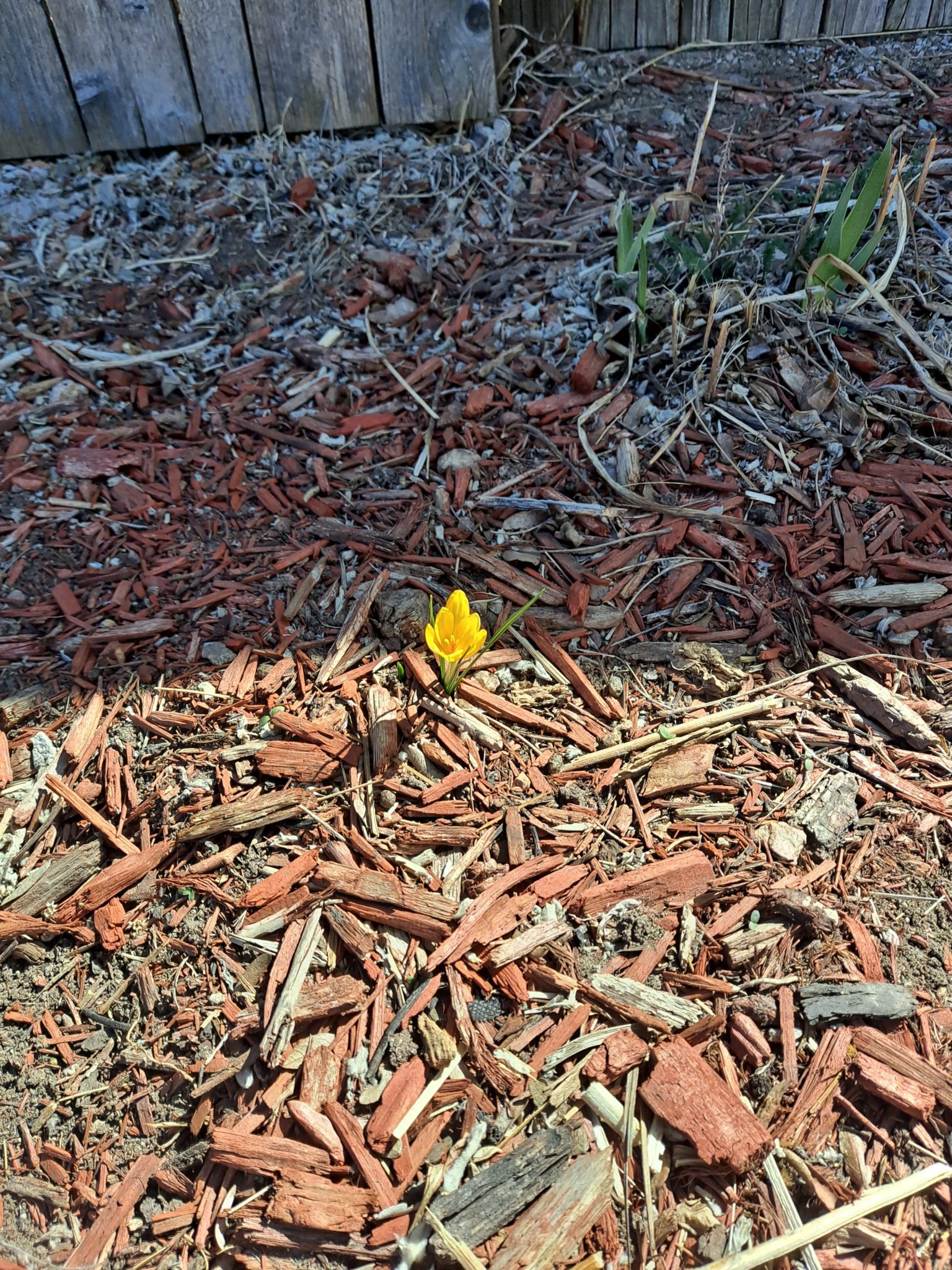
A single, yellow crocus smack dab in the middle of the long border. I know I didn’t plant it. Where did it come from? How did it get there? A mystery that likely will never be solved.
I do have some purple crocuses nearby, but these bulbs are at least 10 feet away from the new guy. Plus, as I just mentioned, they’re purple and definitely not yellow.
Well, as Dr. Ian Malcom says, life finds a way.
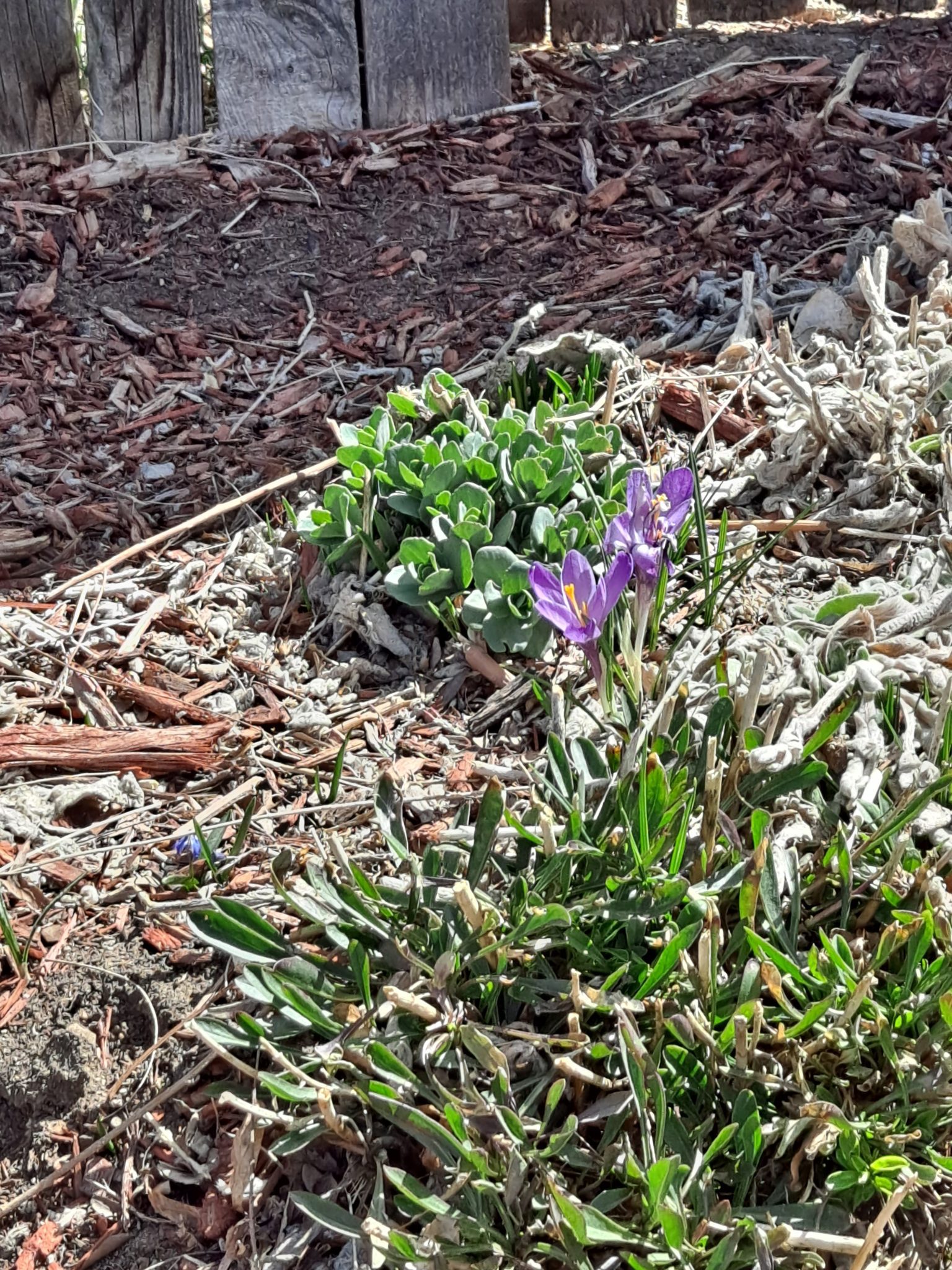
Artic blast cancels the show
Finally, I’m a bit bummed out. I’ve been planting ‘Lemon Queen’ daffodils in the former veggie garden for the past couple of years. Last year’s display was quite good.
This year, the show has already been cancelled.
The buds of the flowers were just getting ready to bloom when we got hit by an unseasonably cold arctic blast. Temps at the Vintage home hit 15 degrees. Those cold temps froze the moisture in the buds, creating ice crystals. Those crystals literally tore up the plant tissue.
Which means no flower display from ‘Lemon Queen” daffodils this year.
Fortunately, the plants themselves will be fine. I’ll plant a few more in the autumn and hopefully, if next year’s the weather cooperates, the ‘Lemon Queen’ daffodils will put on a fine show.
